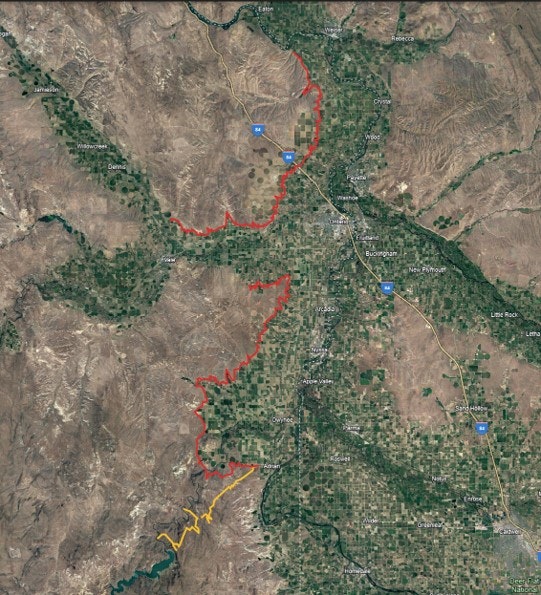BLM - Wildfire Risk Reduction: 2024 - 2029


Wildfire Risk Reduction and Emergency Response Improvement Project
The Owyhee Irrigation District (OID), in partnership with the Department of the Interior’s Bureau of Land Management (BLM), is leading a crucial project focused on mitigating wildfire risks and improving emergency response capabilities. This cooperative agreement is part of a broader effort to create a safer environment for local communities by reducing fire hazards and enhancing access to critical infrastructure for emergency services.
Project Overview
This project, which spans over 72 linear miles, is designed to establish a sustainable firebreak through mechanical fuel reduction (mowing) along key access routes. The firebreak’s width will vary depending on terrain, ranging from 20 feet to more than 100 feet, with an average target width of 30 feet. By creating this firebreak, the project will effectively reduce wildfire spread, protecting over 760 acres of land. Additionally, the project will restore critical routes used for power distribution, communications infrastructure, and emergency response, ensuring quick access to canal water supply locations for fire suppression.
The primary components of the project include:
- Fuels Reduction: Mechanically reducing fire fuels along the 72-mile stretch, which constitutes the largest portion of the work. This will significantly decrease the frequency, intensity, and spread of wildfires in the area.
- Restoration of Access Routes: Enhancing and restoring key routes for maintenance and emergency response, especially those crucial for power distribution and communication systems.
- Emergency Water Access: Establishing emergency pumping sites and improving access to canal water supplies, which are essential for fire suppression efforts by emergency response teams.
Public Benefits
This project not only mitigates wildfire risks but also brings significant public benefits, including:
- Economic Stimulus: The project stimulates the local economy by creating employment opportunities and purchasing equipment and materials locally, benefiting the surrounding community.
- Enhanced Safety: Reducing wildfire intensity and frequency will directly impact the safety of the local population by lowering the risk of injury, death, and property damage.
- Improved Air Quality: By minimizing the number and severity of wildfires, the project contributes to improved air quality in the region.
- Educational and Safety Training: The initiative includes industry-specific fire safety training, raising awareness and encouraging safer practices that will have long-term positive impacts.
BLM Involvement and Collaborative Efforts
The BLM’s substantial involvement in this cooperative agreement includes:
- Joint collaboration in the management, development, and evaluation of the proposed work.
- Review and approval of project activities before commencement.
- Monitoring project progress and providing training to OID personnel.
- The BLM also retains the ability to halt work or redirect activities if objectives are not being met.
Looking Forward
As wildfire risks continue to challenge infrastructure and communities, this project represents a key effort in safeguarding local residents, enhancing emergency preparedness, and protecting vital infrastructure. With over 72 miles of firebreaks, improved emergency water access, and restored access routes, the Owyhee Irrigation District is committed to creating a more resilient environment for its community.
Through this collaboration with the BLM, OID is not only addressing the immediate risk of wildfires but also contributing to the long-term safety, economic well-being, and environmental health of the region.
